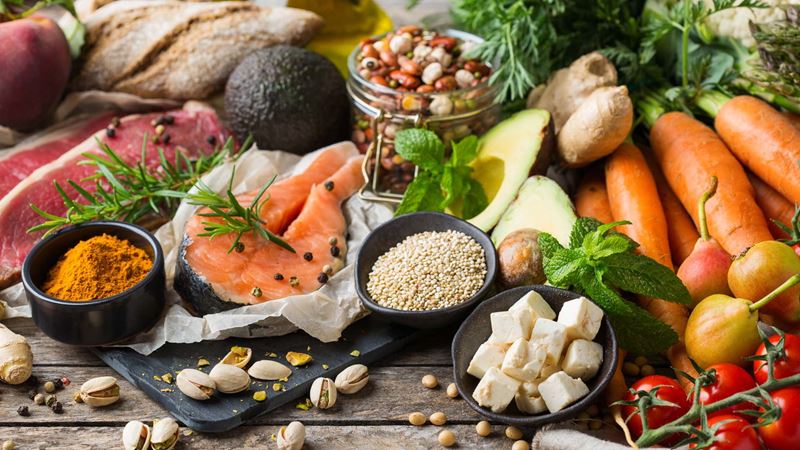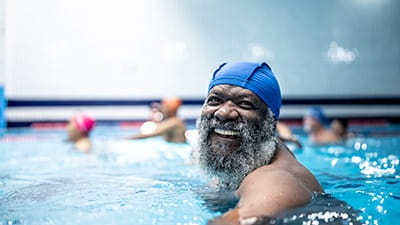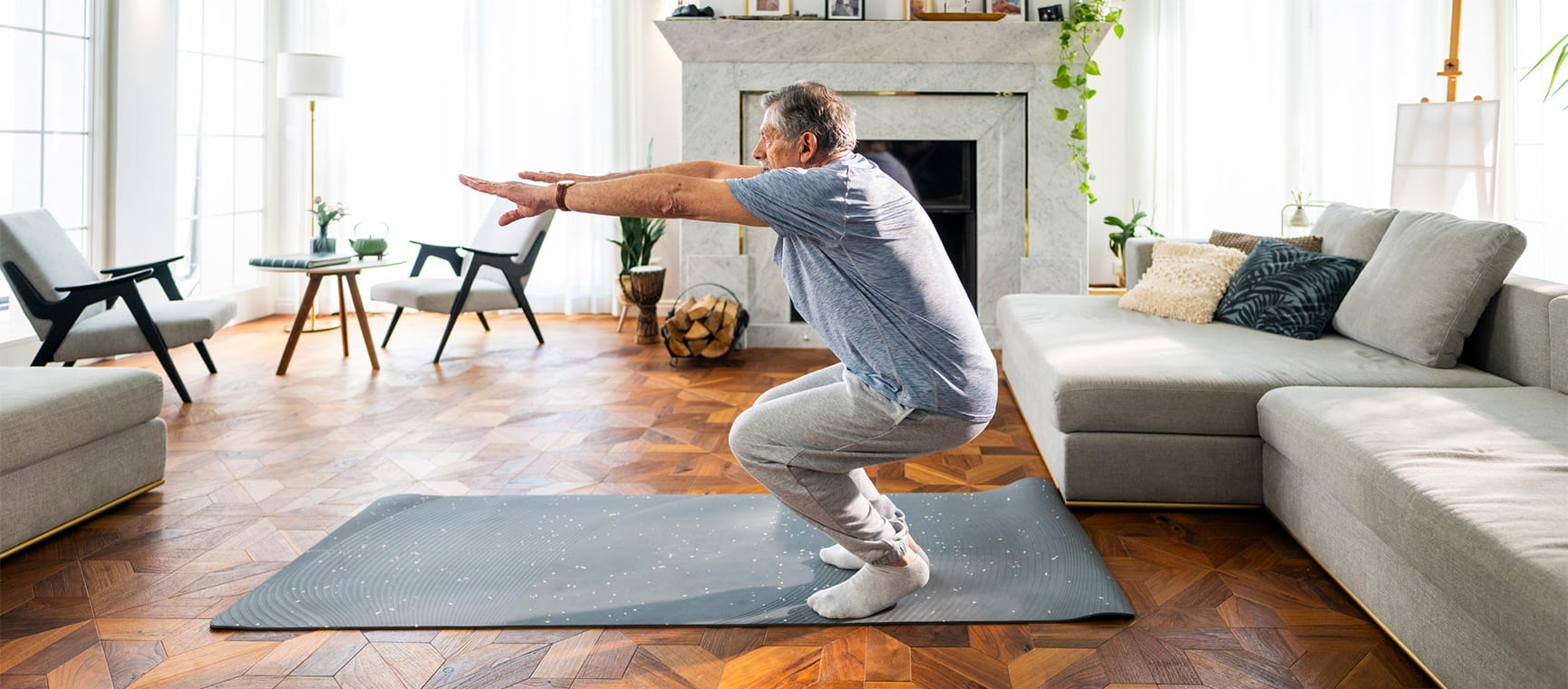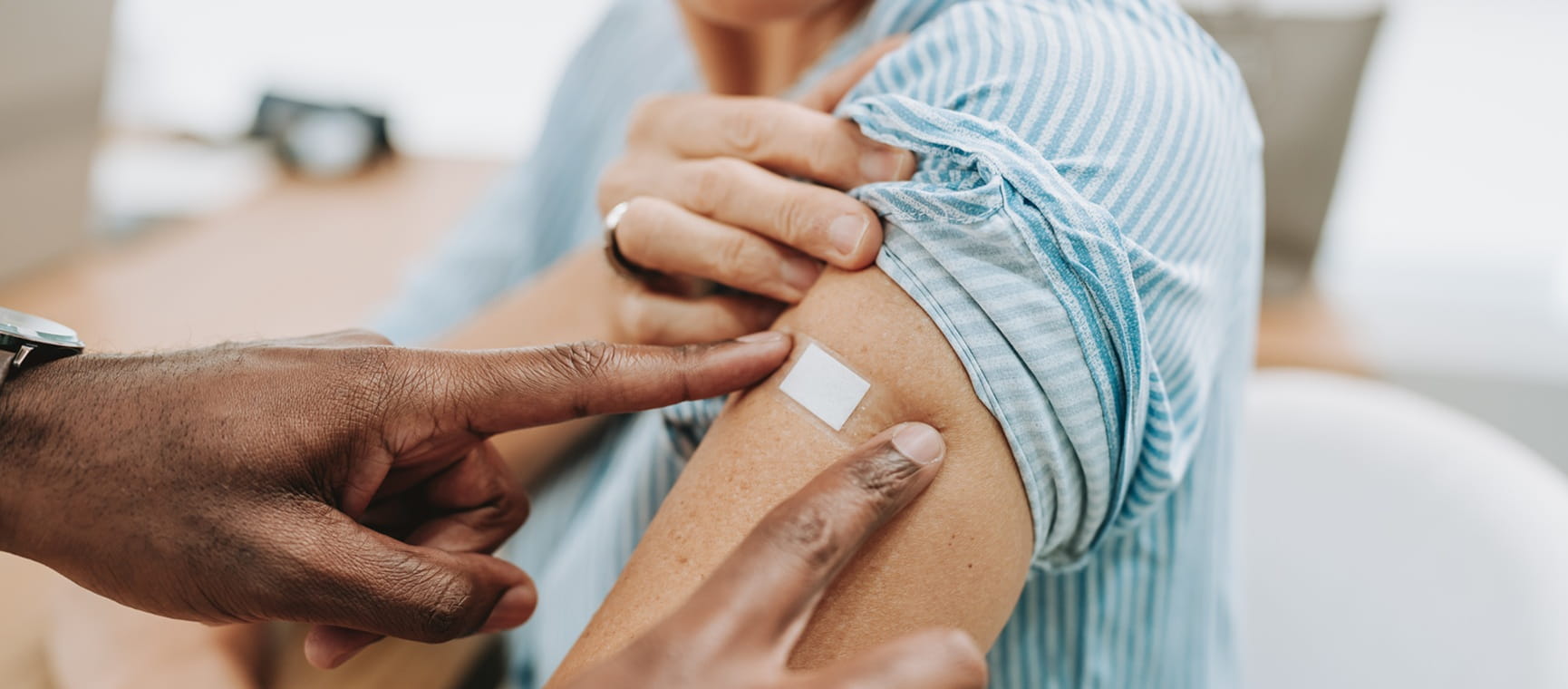Five simple ways to futureproof your knees
With knee pain on the rise in the over-50s, it’s important to start protecting your joints now.

With knee pain on the rise in the over-50s, it’s important to start protecting your joints now.

Baz Luhrmann once said, “Be kind to your knees – you’ll miss them when they’re gone,” and there’s no denying that the Australian film director made a very good point.
The knee is one of our most important joints, but it is arguably also one of the most poorly looked after. However, research has shown that the earlier we put in the work to protect our knees, the more likely we are to feel the benefits later on.
One of the most complex joints in the entire body, the knee bears the full load of our body weight with every step we take. There are four surrounding muscle groups – hamstrings, glutes, quads and calves – which support the knees, providing stability and shock absorption. When these muscles aren’t interacting and working together, more stress is put on the joint, leading to pain.
With almost half of over-50s in the UK experiencing knee pain, it’s important to ensure that these joints are looked after. And it’s never too late to start futureproofing them, with research showing that strengthening these four muscle groups can help prevent osteoarthritis, delaying or even preventing the need for knee replacement surgery.
We asked personal trainer Louise Arnold, and chartered physiotherapist and advanced practitioner Katie McMullan for their expert advice on how to protect our knees.
“All of our joints are designed for moving, and regular physical activity can help your knees in a number of ways,” Louise says. “These include relieving pain and stiffness, strengthening the supporting muscles around the knee joint, and improving balance, which decreases your risk of falls and therefore injuries to your knee.
“Walking is the best exercise anyone can do for joint protection, as it helps keep up your overall fitness without putting too much pressure on the knee area. I would always advise keeping high-impact exercises to a minimum the older you get, just to decrease the risk of joint injury.
“Try a combination of exercises that promote flexibility, such as yoga, strength-building (which can include workouts with weights) and cardiovascular fitness like swimming. But also never forget to warm up and cool down after exercises, and give your joints a good stretch – I’d recommended 15 minutes of stretches a day, focusing on your hips and ankles.”
Katie adds: “The WHO [World Health Organisation] advises that we should do five lots of 30-minute cardiovascular exercise a week, which can include things like brisk walking and swimming. This will help keep your joints moving and avoid any stiffness. If you currently don’t do that much exercise and want to do more, don’t increase the frequency or distance by more than 10% week on week, to reduce the risk of injury.
“I’d also recommend strengthening exercises such as squats, lunges and quadriceps sets, where you sit with your legs straight and then tighten the thigh muscle above your knee as if pushing your knee down into the floor.”

A diet rich in fruits, vegetables, fish, nuts and beans, and low in processed foods and saturated fats can not only reduce your risk of developing cardiovascular and other diseases of ageing, but studies suggest that eating a Mediterranean diet may reduce the risk of developing osteoarthritis, which causes the joints to become painful and stiff.
Research has also shown that the diet can reduce joint-damaging inflammation and disease progression in people who already suffer from osteoarthritis.
“A well-balanced diet, which avoids highly processed foods, can reduce inflammation and support bone and cartilage health,” explains Louise.
“Protein is key for bone health and for building strong connective tissue – eating too little may also lead to a loss of muscle mass and reduced strength. Older adults should ideally consume 1-2g of protein per kg of body weight each day, with poultry, fish and plant-based proteins such as beans and pulses being great options.”
Louise champions oily fish such as salmon, mackerel, sardines and trout as part of a balanced diet, as they contain fatty acid omega-3, which dampens inflammation and may help to relieve stiffness by lubricating joints. “You should aim for two portions of fish a week," she says, “but other sources of omega-3 fats include nuts and seeds, such as walnuts, flaxseed and chia seeds.
“Eating a rainbow of fresh, dried and frozen fruit and vegetables will also benefit your joints. Having a heathy diet also makes it easier to maintain a healthy weight.”
Large amounts of sugar and highly processed foods, as well as smoking and alcohol, are pro-inframammary, which can lead to more frequent joint flare-ups, so these are always best avoided.
If you experience new or worsened pain in a joint or joints, it’s important to speak with your doctor as it can be a sign of injury or increased disease activity, both of which may require treatment to prevent further damage to your joints.
However, Katie advises – if your doctor gives the go-ahead – to keep as active as possible, and sometimes that involves doing mild exercises through pain.
“If it’s new pain or something that hasn’t gone away after a week or so, always get it checked out,” she says. “But if you’ve got the go-ahead, I would say get moving as much as you can. If there's pain after any exercise, apply ice and elevate the joint after, which will bring down any inflammation.
“Our saying is work up to pain but don’t push through it. The golden rule is if you have a slight increase in joint pain rather than muscular pain, it should ease 30-60 minutes after exercise. Pain that wakes you at night or lingers throughout the following day is a sign that you’re doing too much, and it may be helpful to get a physiotherapist’s advice.”
Louise adds: “If you can and it’s not painful, try to be as active as you can, as not moving at all can have a negative impact, even though resting feels like the better option.”

Maintaining a healthy weight may be one of the best things you can do to keep your joints healthy – especially the knees, which bear the brunt of the body’s weight. In one study, at Wake Forest University, overweight or obese adults who lost 20% or more of their body weight reported less pain and could walk further in a six-minute test than those who lost less than 5% of their body weight.
“If you are overweight, then you are putting additional stress on your knees, which can increase cartilage wear and cause pain,” Louise explains. “Research has shown that losing even just a little bit of weight can take pressure off your joints, and the more weight you lose, the more exercise you will be able to do, which can further help the knees.”
According to research, every kilogram of excess weight you carry puts around 4kg of extra stress on your knee joints. When you consider that even day-to-day tasks, such as climbing the stairs, can put seven times more pressure on your knees than your bodyweight alone, it’s easy to see why a healthy and maintainable weight is essential for good joint health.
Not only can wrong shoes hurt the joints in your feet, but they can also affect your posture and joints all the way up your body. For example, high heels put extra stress on your knees and may increase your risk of developing osteoarthritis.
Try to choose footwear with a low heel, or no heel at all. Your shoes should be flexible and supportive, with enough space for your toes to move around. When it comes to exercise, you need very supportive trainers and not 'fashion' ones.
“Running trainers have so much technology to ensure that they tick all the boxes – cushioning, support, the right amount of flexibility and a wide toe box if needed,” Katie says. “Most stores will have experts that can help you choose a shoe that's right for your foot.
“And it’s not just when you exercise. For example, a very flat shoe with no arch can increase strain, as can some summer sandals and flip-flops, because they don’t have enough support.
"If you are going to wear shoes like this, make sure it’s not all the time, and when you’re doing your daily exercise, ensure that you have the correct trainers or boots on; ones that support your ankles. Otherwise, they'll impact your knees as the next joint up.”
We spoke to the experts to find their five proven ways to relieve knee pain.
(Hero image credit: Getty Images)


Health insurance for people over 50 that provides a quicker route to diagnosis and planned medical treatment in a private facility.
Underwritten by Bupa Insurance Limited.

Find out about Saga’s walking holidays here…
Saga’s walking holidays are perfect for exploring Europe’s stunning destinations on foot. They’re suitable for all fitness levels and offer a well-balanced mix of guided walks and relaxation.

Are you retiring at the wrong age? The best age to retire for your body, brain, happiness and pocket.


Everything you need to know about the lung infection, and how you could be ill with “walking” pneumonia without realising it.

Strong calves for a strong mind: how they support our circulation and brain health, with easy moves to strengthen yours at home.


Our GP Dr Mark Porter explains what can cause itchy skin, which is a common problem as we get older.

Worried you’ve morphed into Victor Meldrew? Find out how to battle that bad mood, and what to do if you’re stuck with a grouchy loved one.

The benefits of heat and cold therapy, and how Nordic bathing won over our nervous writer.

Here’s how to spot the symptoms of heat disease and reduce your danger.


The NHS winter vaccination campaign kicks off next week. Here’s the lowdown on what you need to book.

Pilates for back pain – what to do if you are suffering, and five gentle exercises that could help.

Dizziness or vertigo: a sensation of spinning, can stop us doing everyday things for fear of falling. Try these tips to stop feeling dizzy


You don’t have to put up with bladder leaks. We try out the latest pelvic floor gadgets for men and women.

Cataracts are a normal part of ageing. Learn how to spot the signs – and when it’s time to consider surgery.